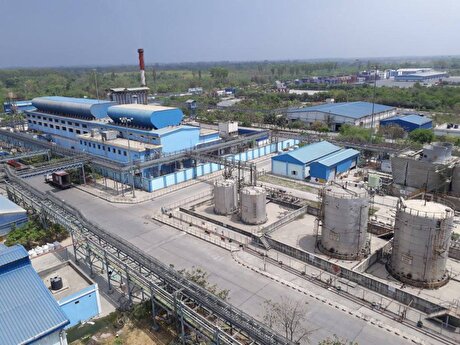
Analysis: China's coal power extends westward shift

The continued northwestern migration of coal-fired generation is aimed at reducing pollution in population centres and cutting back inefficient, cross-country coal transportation. It could lead to an increase in the use of domestic coal as more coal-fired electricity is generated closer to mining centres.
National bureau of statistics figures for the first three quarters of 2019 highlight the regional contrast in thermal power trends across China, where thermal power generation is largely based on coal.
Thermal output has been on the decline in the coastal provinces of Shandong, Jiangsu and Guangdong in September, but has risen in the inland regions of Inner Mongolia, Shanxi and Xinjiang. These six provinces and regions make of nearly half national thermal power output.
Most symbolically, the vast northwestern region of Inner Mongolia appears on course to eventually overtake coastal Shandong province as the top producer of thermal power if the current trend continues.
Shandong remained the top thermal power producer in September with output of 41.92TWh, around 10pc of national thermal output of 414.96TWh. But September's national output was down by 6.6pc from a year earlier, even as China recorded its largest year-on-year gain in thermal generation for over a year during the month.
This brought Shandong's thermal output over the first three quarters of 2019 to 385.46TWh, a 5pc decline on the year. The province remained the largest producer of any type of electricity, with 92pc of its 417.2TWh of generation over January-September coming from thermal power.
But Inner Mongolia moved closer to first place last month as thermal power output jumped by 15.2pc on the year to 39.1TWh. Inner Mongolia's power output was up by 9.6pc to 338.1TWh in January-September. Thermal power output in Inner Mongolia also grew more quickly in September than overall power output, which increased by 9.4pc to 44.05TWh, suggesting that thermal power generation could be set to capture an increasing portion of market share.
The eastern coastal province of Jiangsu was the third biggest power producer in the month with 39.18TWh of thermal output, although this was down by 7.5pc on the year. Jiangsu's total thermal output declined by 4.1pc to 333.21TWh over the nine-month period.
The southern coastal province of Guangdong contributed another 31.09TWh of thermal output in September as increased power demand contributed to a 16.7pc jump in output on the year. But Guangdong thermal output declined by 7.5pc over the first three quarters of 2019, to 245.49TWh.
Northern provinces on the rise
By contrast, the northern regions of Shanxi and Xinjiang both increased their thermal power output to 218.52TWh and 200.52TWh over the first nine months of the year — gains of 5.3pc and 8.4pc, respectively. They also registered increases last month.
Coal consumption is still on the rise at China's six coastal utilities, the main consumers of imported coal. Consumption rose to 660,000 t/d last month from 630,000 t/d in September 2018, according to data from coal industry association the CCTD. And their consumption has averaged 620,000 t/d so far in October, up from 520,000 t/d during the same period last year.
But the westward growth in electric power generation is occurring as China builds more coal mining capacity in that region. National regulators have approved a total 132.3mn t of new coal mining capacity in Inner Mongolia so far this year, accounting for 77pc of all new approvals so far this year.
The central government has also unveiled supporting measures that will make it easier to mine and burn coal in the region, including a $17bn programme to build out China's coal rail infrastructure. The plan is mainly aimed at reducing "the last kilometre" bottleneck for coal transportation but could also make domestically produced coal more cost-effective than imported coal.


Hindustan Zinc to invest $438 million to build reprocessing plant

Gold price edges up as market awaits Fed minutes, Powell speech

Glencore trader who led ill-fated battery recycling push to exit

UBS lifts 2026 gold forecasts on US macro risks

Roshel, Swebor partner to produce ballistic-grade steel in Canada

Iron ore price dips on China blast furnace cuts, US trade restrictions

Emirates Global Aluminium unit to exit Guinea after mine seized

South Africa mining lobby gives draft law feedback with concerns

EverMetal launches US-based critical metals recycling platform

Barrick’s Reko Diq in line for $410M ADB backing

Gold price gains 1% as Powell gives dovish signal

Electra converts debt, launches $30M raise to jumpstart stalled cobalt refinery

Gold boom drives rising costs for Aussie producers

Vulcan Elements enters US rare earth magnet manufacturing race

Trump raises stakes over Resolution Copper project with BHP, Rio Tinto CEOs at White House

US seeks to stockpile cobalt for first time in decades

Trump weighs using $2 billion in CHIPS Act funding for critical minerals

Nevada army depot to serve as base for first US strategic minerals stockpile

Emirates Global Aluminium unit to exit Guinea after mine seized

Barrick’s Reko Diq in line for $410M ADB backing

Gold price gains 1% as Powell gives dovish signal

Electra converts debt, launches $30M raise to jumpstart stalled cobalt refinery

Gold boom drives rising costs for Aussie producers

Vulcan Elements enters US rare earth magnet manufacturing race

US seeks to stockpile cobalt for first time in decades

Trump weighs using $2 billion in CHIPS Act funding for critical minerals

Nevada army depot to serve as base for first US strategic minerals stockpile

Tailings could meet much of US critical mineral demand – study
















